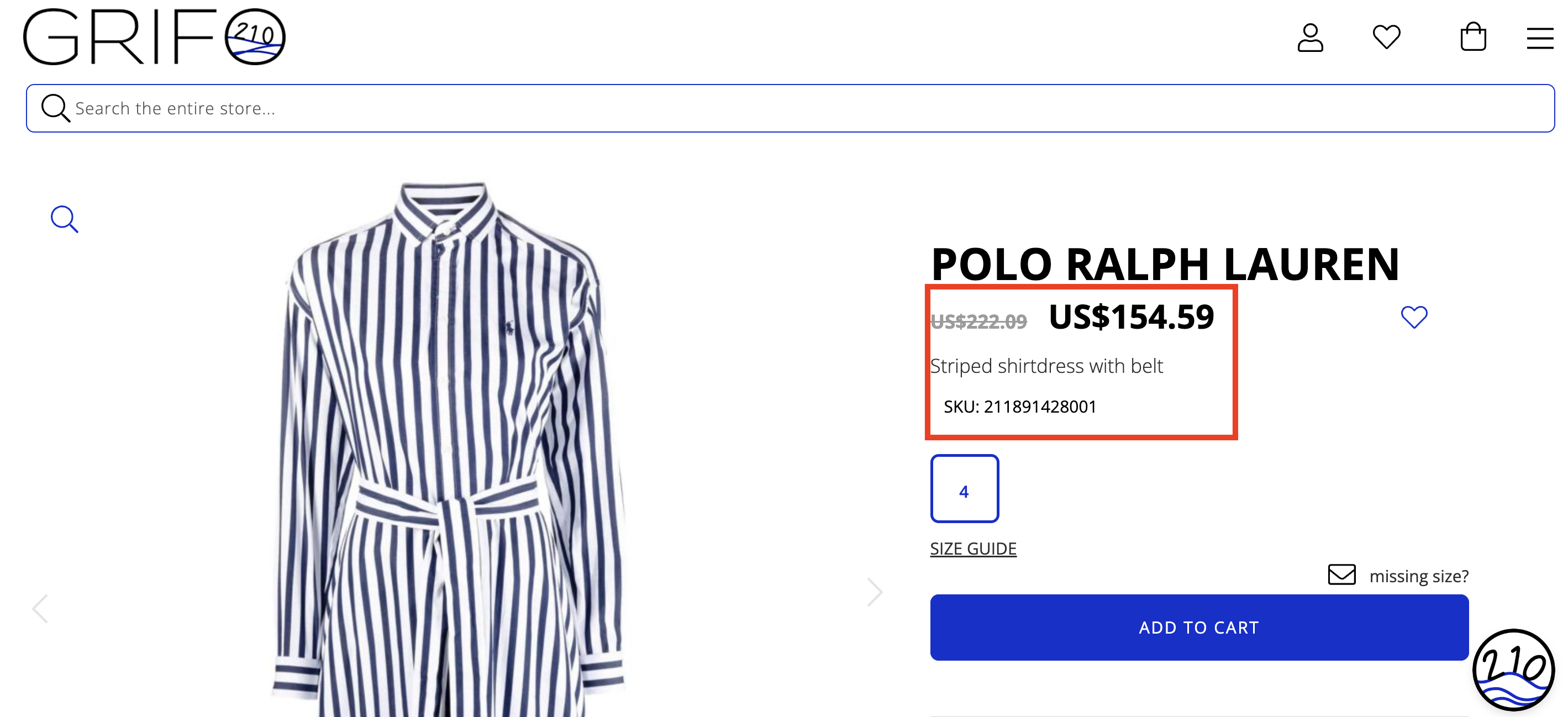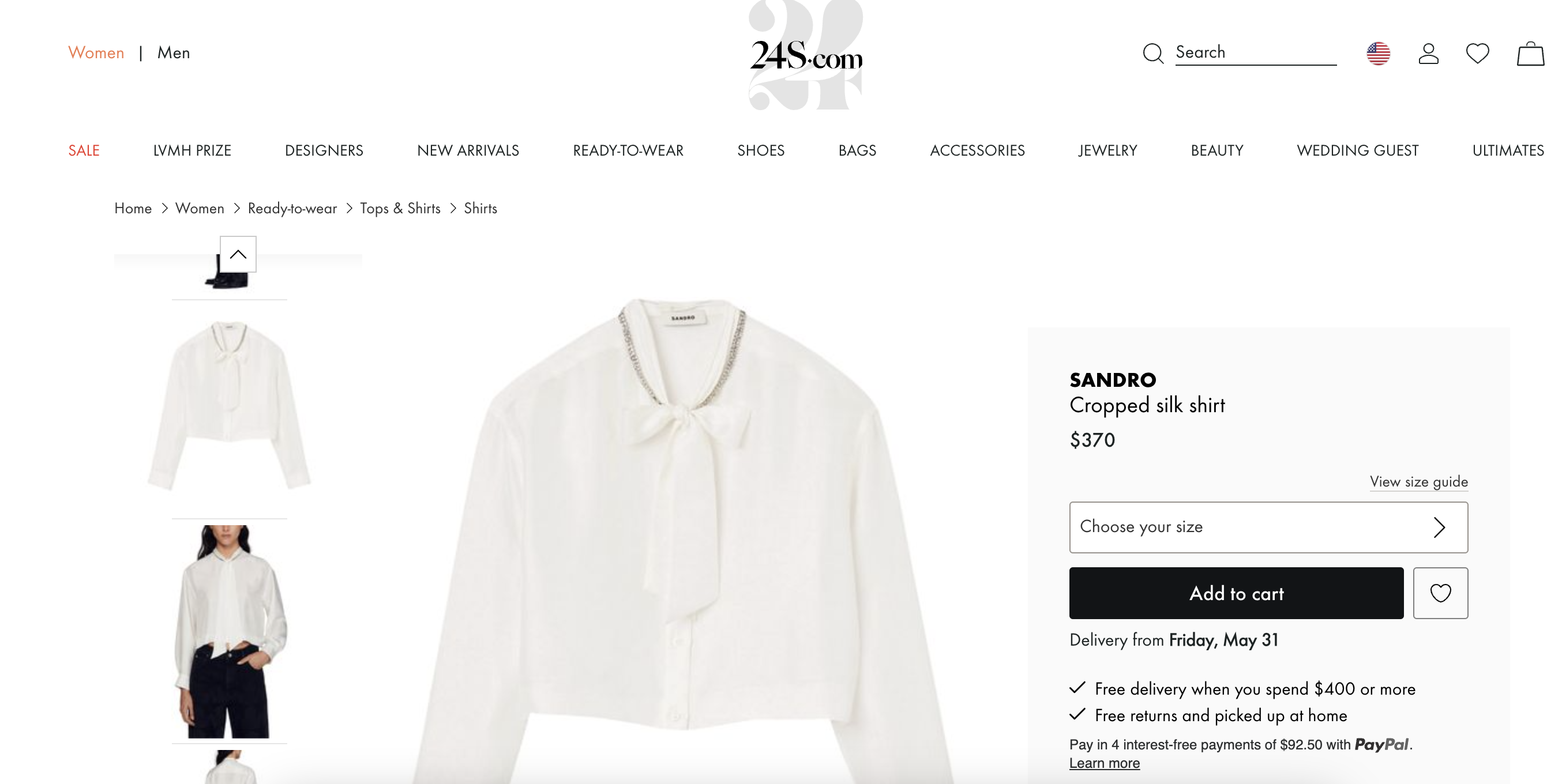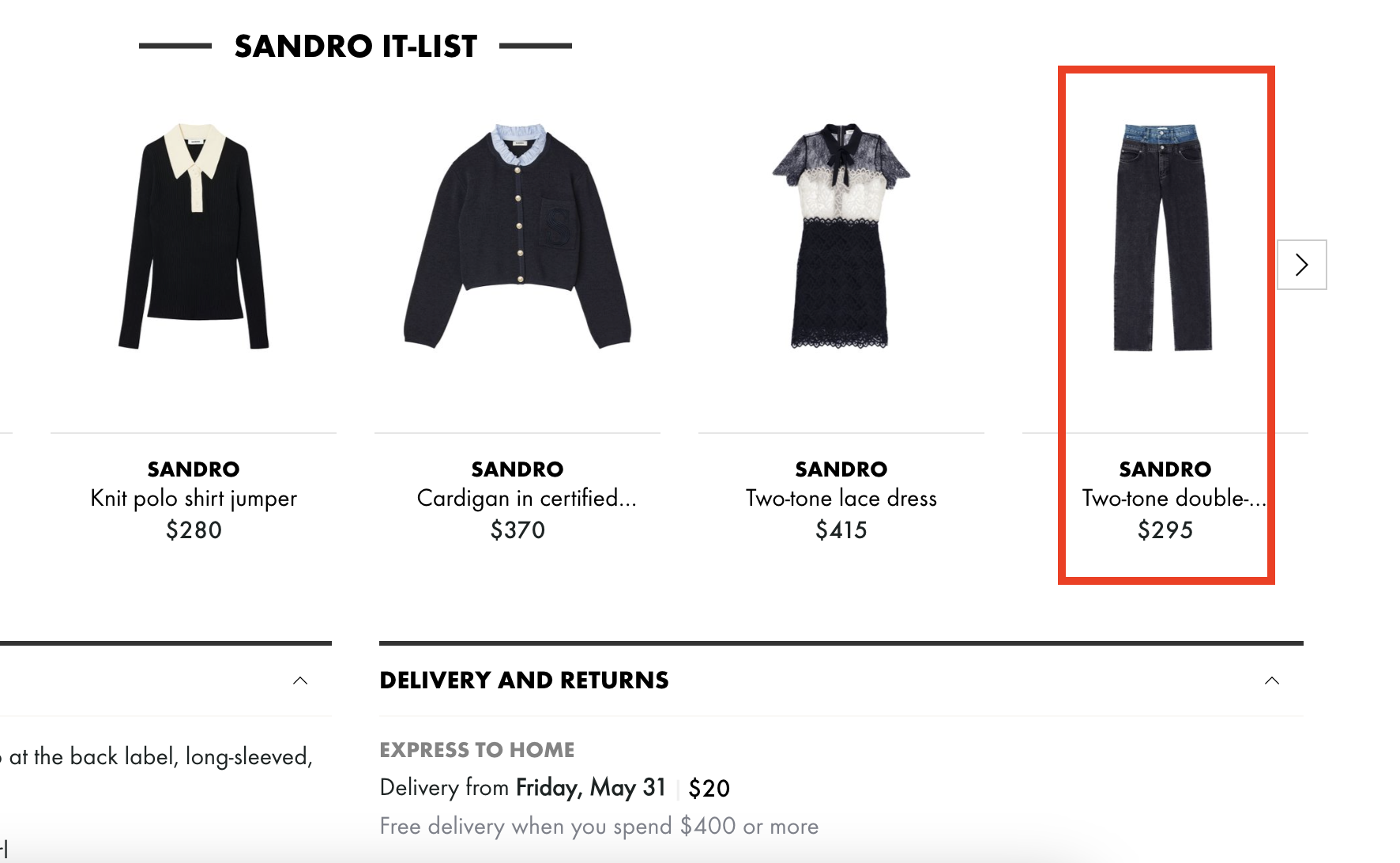What is Inventory Turnover and How to Calculate it?
- What is the inventory turnover?
- How do you calculate inventory turnover ratio?
- Why calculating inventory turnover is crucial?
- Is high inventory turnover good?
- What does low inventory turnover mean?
- What is the best inventory turnover ratio?
- What is deadstock and what to do with it?
- Strategies for improving inventory turnover
- To sum things up
Ever wondered how efficiently a business is moving its stock? That’s where inventory turnover ratio (ITR), or simply inventory turnover, comes into play.
This nifty metric is a clear indicator of how quickly a company sells through its inventory. Think of it as a health check on a business's sales efficiency.
In this article, we'll dive deeper into what makes inventory turnover a critical measure for any business, show you how to calculate it and discuss strategies to optimize your inventory levels.
:format(webp)/https%3A%2F%2Fbrandsgateway.com%2Fapp%2Fuploads%2F2024%2F06%2Fbanner.jpg)
Looking for a reliable dropshipping or wholesale supplier?
Join us today for top-quality products and unbeatable prices.
What is the inventory turnover?
Inventory turnover is a financial ratio that shows the number of times a company has sold successfully and replaced its inventory throughout a given period of time.
It’s a handy tool for understanding how well a business is managing its stock levels.
Think of it like this: if you own a clothing store, the inventory turnover ratio tells you how many times your entire stock of jackets, jeans, or shoes gets sold out and restocked within a year.
The inventory turnover formula helps to divide this period into days and show how many days it takes for a company to sell through the inventory it has on hand.
How do you calculate inventory turnover ratio?
Inventory turnover can be calculated by dividing the cost of goods sold (COGS) by the average inventory during a specific time frame.
Formula: Inventory turnover = [Cost of goods sold (COGS)] \ [Average inventory]
Let’s break it down:
- Cost of Goods Sold (COGS): This is the total cost incurred to produce the goods that were sold during a specific period.
- Average inventory: This is usually calculated by adding the beginning and ending inventory for a period and then dividing by two.
For example, if your COGS for the year is $500,000 and your average inventory is $100,000, you inventory turnover ration is 5, meaning you sold and replaced your entire inventory five times in that year.
Why calculating inventory turnover is crucial?
Calculating inventory turnover can shed light on various critical aspects of your business:
- Efficiency check: It helps measure how efficiently your business is using its inventory to generate sales.
- Financial health: High turnover indicates strong sales or effective inventory management, while low turnover might suggest weak sales or excess stock.
- Cash flow management: Knowing your turnover rate allows you to manage cash flow better by aligning inventory purchases with actual sales.
- Market trends: Helps in understanding market demand and adjusting your stock levels accordingly.
- Operational insights: Helps identify issues in various areas like purchasing strategies or promotion tactics.
Is high inventory turnover good?
High inventory turnover is generally seen as a positive sign. It often indicates that a company is efficient and financially healthy.
You would want to keep your inventory turnover at a high level for the following reasons:
- retailers that move out inventory faster tend to be better performing.
- the longer a product is held, the higher the handling and storage cost will be which will negatively impact your profitability.
- if a business keeps trying to sell goods that are not desirable for consumers and not offering newness to them, it will give fewer reasons for the consumers to return.
- there is also an opportunity cost associated with low inventory turnover as a product that is not selling efficiently can cause cash flow issues for the business and prevent the purchase of products that might sell faster.
What does low inventory turnover mean?
Low inventory turnover can be a red flag for several issues within a business. Let’s break down what this means and why it’s important to keep an eye on it.
When a business has a low inventory turnover rate it can signal the following:
Poor sales performance
When inventory turnover is low, it might signal that sales aren’t happening as fast as they should be. This can stem from:
- Lack of demand: The goods offered for sale are not meeting the expectations of the targeted niche.
- Pricing issues: The products your business is offering have higher retail prices than what the consumers are willing to pay for them;
Holding onto too much stock
Having too much stock can lead to unwanted consequences as well:
- Increased holding costs: Storing goods isn’t free. You’ll be paying for warehouse space, insurance, and other related costs.
- Potential obsolescence: Products can quickly go out of style. If such items sit for too long, they might never sell.
Not meeting customer demand
Low turnover may also indicate you’re not effectively meeting what customers want. This could be due to:
- Insufficient variety: Customers expect variety—if you’re only stocking certain types of women’s handbags while ignoring others, you may miss out on sales.
- Poor market adaptation: Failing to adapt to seasonal changes or market shifts can leave you with excess stock during off-peak times.
- Poor marketing efforts: You are not using successful marketing strategies to get the consumers interested in the products and generate sales.
What is the best inventory turnover ratio?
It is hard to say what is a good inventory turnover rate for a business as it is highly dependent on the market it operates in and the type of products it is selling.
For example, an automobile manufacturer will have a lower inventory turnover rate than a company that is selling fast-moving consumer goods.
This is because consumers tend to purchase low-ticket items much faster than more high-ticket items where they need time to make a purchasing decision.
For this reason, inventory turnover rates can only be assessed when industry average and competition are taken into consideration as well.
In general, businesses are aiming to have their inventory turnover rate between 5% and 10%.
What is deadstock and what to do with it?
Deadstock is also referred to as obsolete inventory and is used for inventory that has not been sold or used for a considerably long time and is not expected to be sold in the foreseeable future.
Unfortunately, this type of inventory can cause large losses for a company and needs to be written off or written down.
In today’s highly competitive market where consumers are better informed and have a higher expectation of the products they are offered, the product life cycle tends to be shorter and inventory tends to become obsolete much faster than before.
Strategies for improving inventory turnover
Boosting your inventory turnover isn’t just about selling more—it’s about selling smarter and managing your stock more effectively.
Here are some practical strategies to help you enhance your inventory turnover and keep your business running smoothly:
Identify and analyze inventory
Regularly review your inventory to identify items that haven’t been selling in a while.
One effective way to improve inventory turnover is to regularly review your stock levels. Pay special attention to items that have been sitting in inventory for an extended period.
These items, often referred to as deadstock, can tie up valuable resources and capital that could be better used elsewhere.
By identifying these underperformers, you can take steps to address why they aren’t selling.
Is it a pricing issue? Poor product visibility? Or perhaps it simply doesn’t resonate with your target market?
Once identified, you can make informed decisions—whether that’s adjusting promoting strategies, repositioning the product in-store, or even repurposing the items to better meet consumer needs.
For example, a clothing retailer might notice that a particular style of dress isn’t selling well and could consider marking them down or displaying them more prominently to increase visibility.

Discounts and promotions
Offer discounts or bundle deals to move deadstock quickly.
To clear out slow-moving stock and improve the inventory turnover ratio, consider implementing discounts or creating bundle deals.
This strategy can be particularly effective during peak shopping seasons or in conjunction with marketing campaigns.
For instance, you could cross-sell or upsell a slow-selling shirt with a popular pair of pants at a discount, offering customers a perceived higher value while clearing out older stock.
Additionally, flash sales or limited-time offers can create a sense of urgency, encouraging customers to purchase before the deal expires.
This approach not only helps move stale inventory but also engages customers and can drive additional foot traffic to your store or website.


Improve product forecasting
Leveraging sales data and market trends can significantly enhance your inventory forecasting, which is crucial for maintaining optimal stock levels.
By analyzing which products sell during certain periods or in response to specific trends, you can make more accurate predictions about how much stock to order and when.
For example, if data shows that sales of certain outdoor apparel spike in the early summer, you can ensure that you have adequate stock of such summer products leading up to this period.
Advanced forecasting techniques, such as Google Trends and AI tools, can help predict future trends with greater accuracy.
This proactive approach not only prevents overstocking but also ensures you don’t miss out on potential sales due to understocking.
To sum things up
Understanding and calculating the inventory turnover ratio (ITR) is crucial for any business aiming to optimize its inventory management.
This metric provides insights into how effectively a company is selling its products, directly impacting sales strength and overall business performance.
It’s always better to plan carefully and only purchase the amount of inventory you are confident you can sell out based on current trends and consumer behavior.
In that way, you not only maintain a healthier cash flow but also enhance your operational efficiency.
Related articles
Our clients' success stories speak volumes about the impact BrandsGateway has had on their businesses.
View More Articles








:format(webp)/https%3A%2F%2Fprod-brandsgateway-images.s3.fr-par.scw.cloud%2F2022%2F04%2Flilla-087c0e93-1f4.webp)
:format(webp)/https%3A%2F%2Fbrandsgateway.com%2Fapp%2Fuploads%2F2024%2F11%2Fwarehouse-layout.png)
:format(webp)/https%3A%2F%2Fbrandsgateway.com%2Fapp%2Fuploads%2F2024%2F11%2Fproduct-demand-forecast.png)
:format(webp)/https%3A%2F%2Fprod-brandsgateway-images.s3.fr-par.scw.cloud%2F2021%2F06%2Fmoq-wholesale-62332ac4-3d8.jpg)
:format(webp)/https%3A%2F%2Fbrandsgateway.com%2Fapp%2Fuploads%2F2025%2F04%2Freview-scaled.jpg)
:format(webp)/https%3A%2F%2Fprod-brandsgateway-images-do.s3.fr-par.scw.cloud%2F2019%2F04%2F6-Best-Men%E2%80%99s-Clothing-to-Sell-in-2019.jpg)
:format(webp)/https%3A%2F%2Fprod-brandsgateway-images.s3.fr-par.scw.cloud%2F2022%2F02%2Finstagram-stories-dropshipping-store-c7eaad24-d54.jpg)
:format(webp)/https%3A%2F%2Fbrandsgateway.com%2Fapp%2Fuploads%2F2025%2F03%2Fstartup-costs-scaled.jpg)
:format(webp)/https%3A%2F%2Fbrandsgateway.com%2Fapp%2Fuploads%2F2025%2F03%2Fgiveaway-scaled.jpg)